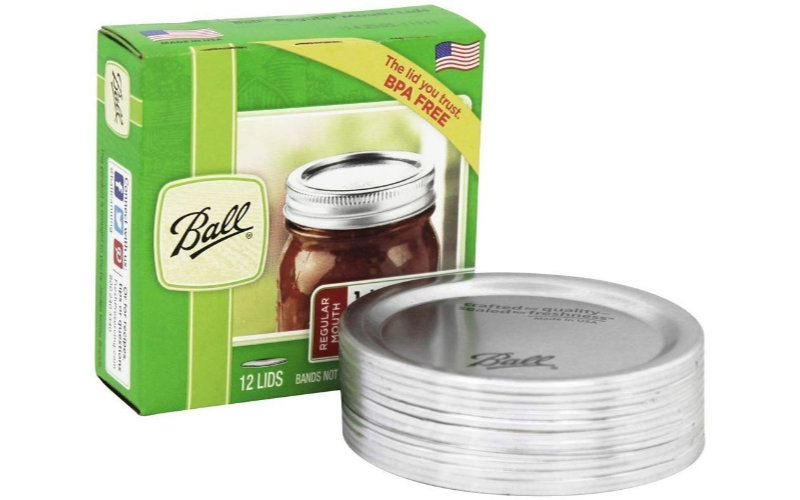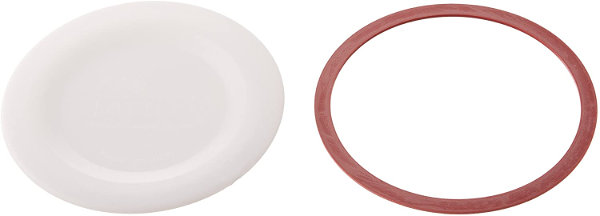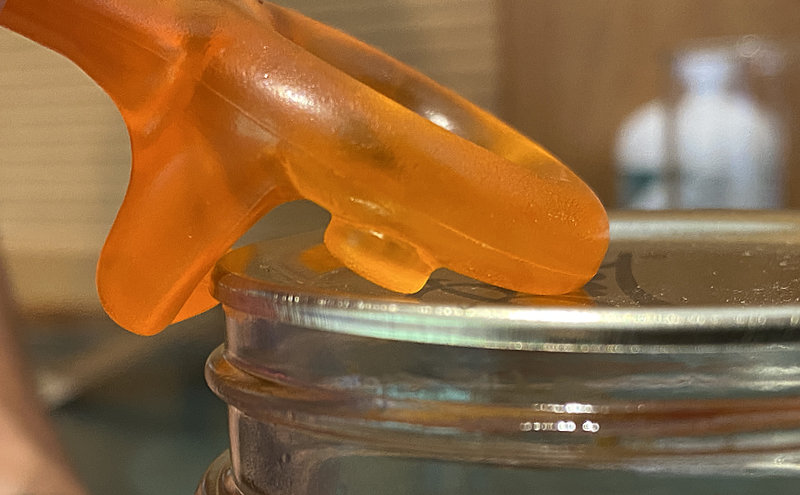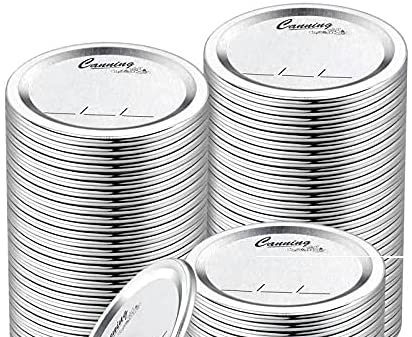Can I Reuse Canning Lids on My Jars? Some Say Yes, Some Say No

Can you reuse canning lids? Someone on the blog recently commented that she reuses ordinary canning lids on her jars. I have not tried that yet. It is not a recommended practice. However some have had good results.
My concern has been that if I try it, and it doesn’t work (the lids don’t seal), then I’ve wasted my canning efforts for that batch.
So let me ask YOU. Have you had success or failure trying to reuse canning lids for a second time around? Have you ever tried it?
(UPDATED with more information and tips for reusing canning lids, and using Tattler lids)
I will first talk about Tattler lids. Then, tips about reusing your own ordinary lids.
I know they make ‘ Tattler ‘ reusable lids designed for this (and you can comment on that too). But I’m especially curious about standard canning lids.
Tattler Reusable Lids
(view on amzn)

It comes as a lid and gasket. According to some reviews, apparently there are a few tricks to using them. Tighten the lid just snug, then loosen just a bit (about 10 degrees). “If they are put on too tight they make a dome and may break (while processing). If they are too loose they might blow off in the canner.” Also, fully tighten the ring when it comes out. Sounds like “practice makes perfect”.
Watch out for these potential causes of lid failure:
- A tiny flaw in the mouth of the jar.
- A tiny piece of food on the mouth of the jar.
- Incorrect headspace according to the recipe.
A Texas Homesteader said, “…with a Tattler reusable lid – if you don’t adjust your tightening procedure before & after canning and instead try to tighten it the same as conventional canning lids before placing in the canner, that could be the most common cause for reusable canning lid seal failure.”
Tattler says the following:
Tattler Lids do require a bit of variation from conventional metal lids. Being a two piece combination with a rubber gasket ring, Tattler Lids must remain a bit loose during processing in order for the jar to vent the pressure that has built in the jar during processing. An online customer gave us a very good tip on how tight is ‘Just Right’. To get the feel for the correct tightness prior to processing, place the jar on a counter top or other smooth surface, then place your index finger on the lid (do not apply too much pressure while tightening the metal band). Screw the metal band on until the jar begins to spin on the counter top (or other smooth surface). This is the perfect tightness for processing!
Evidently it is important with Tattler lids, after removing from the canner, shortly after the bubbling slows down – but still very hot – put a towel over the hot jars and finish tightening the metal rings. When cool, remove the rings and check the lids to be sure they are sealed.
Can You Reuse Canning Lids
I searched the internet for some answers. Here are some statements that I found:
“These lids have a special sealing compound around the rim that is only good for one use.”
“When you use a lid on a jar for canning, it forever leaves an imprint and just won’t seal adequately the next time.”
“Once the gummy, rubbery seal on the lid is heated and cooled, it can‘t make the same quality of seal again.”
But then there was this success story:
“Finally I got around to trying it and indeed they sealed up nicely. I heated the used lids up with some hot water first to soften the seals and every single one of them worked as if they were brand new!”
If you are going to try and reuse canning lids, how-to advice…
First, this is not recommended practice by canning lid companies. With that said, many have had success. Here are a few tips if you try to reuse your canning lids.
Go Through Your Lids
- Go through your lids. Don’t use any that appear dented or bent. Throw them out.
- Use only the best looking lids.
- Wash the lids in hot, soapy water. Be sure to wash clean the seal of any residue.
- Your used lids seal will have an indent where it sealed last time. Boil the lids for 20 minutes and let cool. This will diminish that indent and somewhat restore it.
- Now you can simply save those lids for reuse later. Store them separately. Mark them as used.
How-to Open A Canning Lid Without Damaging It
If you want a chance at reusing your canning lids, then you should try not to damage the lids from the first batch when you open them!
We’ve been using this handy tool for years with great success. In fact I just recently replaced it, because they do wear out after awhile (the pry lip portion of the tool).
Brix JarKey Opener
(amzn)
I took a picture while Mrs. J held the lid opener in position. The trick is to hold the jar with your left hand while using your right hand to get the tool’s lip underneath the canning lid edge. Then pull up while gently prying up the tool. Slow and steady. I like this way better than prying with a butter knife.

The Takeaway
Maybe it’s a good idea to save your used canning lids for preparedness, “just in case”. In other words, if times got tough such that you couldn’t get any more lids, then these might work…
I don’t see a safety issue with reusing canning lids because if they don’t seal, it will be obvious (assuming you check!). You must check the seal afterwards, and when it’s cool.
Tip: This is what I do after every batch… After the jars cool, remove the rings. Then check the lids to be sure they are sealed tight. I just use a finger and try to pry the lid. It should be absolutely tight.
“The ball site recommends lifting the jar by the lid to test the seal. Of course if the seal is weak, things’ll get a little messy.”
Anyone who’s into canning knows that it’s not a good idea to consume foods where the seal has failed (unless it’s right away after the canning process).
My concern would be lid failure to seal and having wasted the time making that batch.
So again, have any of you tried reusing canning lids?
Save Money and buy your canning lids in bulk:
Bulk Lids
(amzn)

[ Read: How To Pressure Can Chicken ]
[ Read: How To Fix Pressure Canner Problems ]
